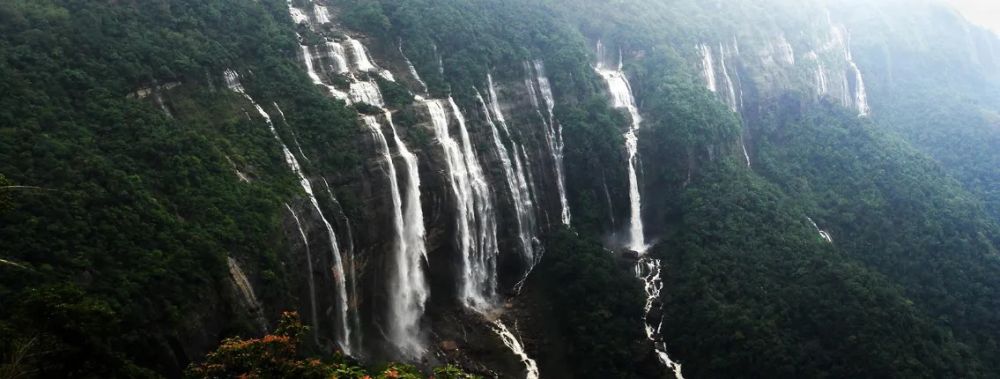

The Seven Sisters Falls, also known as the Nohsngithiang Falls, is a spectacular natural attraction located in Cherrapunji, which is also officially known as Sohra, in the Indian state of Meghalaya. Renowned for its seven-segmented cascade, the waterfall is one of the tallest in India and is a breathtaking sight, especially during the monsoons when it is in full flow.
Cherrapunji, once known as the wettest place on Earth, has held a place of curiosity and intrigue among travelers for centuries. The tourism history in this region can be traced back to the British era, when British officers stationed in India would visit the area to escape the summer heat and enjoy the cool climes of the Khasi Hills. The spectacular waterfalls, living root bridges, and unique culture of the indigenous Khasi people have attracted visitors from around the globe, thus laying the early foundations for tourism in Cherrapunji.
Seven Sisters Falls has always been a cornerstone in Cherrapunji's tourism scene. Named after the seven states of the Northeast, the falls signify unity and nature's grace. It cascades down limestone cliffs, creating a harmonious blend of water, sound, and the lush green environment—a majestic representation of Meghalaya's natural beauty.
Over the years, infrastructural developments, such as better roads and improved accommodation facilities, have made the falls more accessible to travelers. The establishment of viewpoints and eco-friendly parks around the falls area allows visitors to safely enjoy the view and take in the natural splendor.
In recent years, there has been a significant uptick in eco-tourism, with visitors seeking destinations that offer unspoiled natural beauty and opportunities for adventure. Cherrapunji's various attractions, including the Seven Sisters Falls, perfectly cater to this trend. Travelers are also increasingly drawn to cultural tourism, aiming to understand and experience the ways of the local Khasi tribes.
As tourism continues to flourish, there are also growing concerns about the environmental impact on the region’s sensitive ecosystems. Conservation efforts have been put in place to ensure sustainable tourism practices. Governmental regulations, alongside initiatives by local communities, aim to preserve the falls and surrounding areas for future generations.
Looking forward, the focus is on balancing the increasing tourist numbers with conservation efforts. There is a push towards promoting off-season travel to reduce pressure during peak seasons and to spread the economic benefits throughout the year. The development of community-based tourism also promises to enhance the visitor experience while providing economic benefits to the local people.
The Seven Sisters Falls continue to be a focal point for visitors to Cherrapunji, symbolizing the essence of Meghalaya's natural grandeur. As tourism evolves, the falls remain a testimony to the region's capacity to inspire awe and offer enriching experiences to all who witness its splendor.